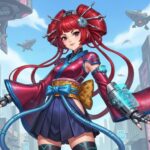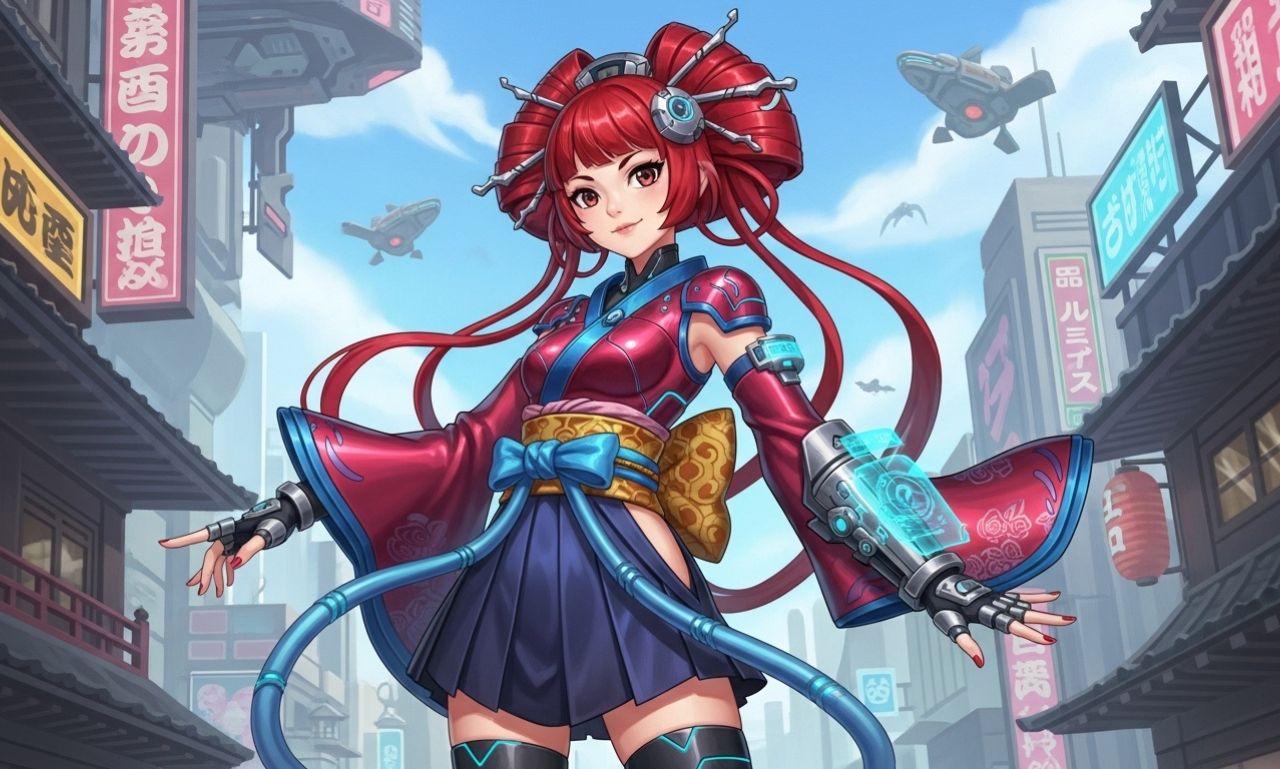Character design has always played a pivotal role in storytelling, but few have pushed the boundaries of creativity and innovation quite like Dojen Moe. With a distinctive style that blends whimsy and depth, he captivates audiences while redefining what character aesthetics can be. Whether you’re an avid fan or just dipping your toes into the world of modern media, understanding Dojen Moe’s work opens up new dimensions in how we perceive characters and their narratives. His artistry not only challenges conventions but also inspires a wave of fresh talent in the industry. Let’s dive deeper into this fascinating figure who is making waves with each stroke of his pen!
Who is Dojen Moe?
Dojen Moe is a groundbreaking character designer and artist whose work has captivated audiences worldwide. Born into the vibrant world of animation, his unique vision redefines how characters are perceived in modern media.
Moe blends traditional artistry with contemporary aesthetics, creating whimsical yet relatable figures. His style features bold colors and exaggerated proportions that draw viewers in instantly.
With a background steeped in both fine arts and digital illustration, he brings an unparalleled depth to his creations. Each character tells a story, sparking emotional connections with fans across various platforms.
From video games to animated series, Dojen’s influence is palpable. He continues to push boundaries within the industry while inspiring aspiring artists everywhere.
The impact of character design in media
Character design plays a pivotal role in media, influencing how stories resonate with audiences. A well-designed character can evoke empathy and connection, making viewers invest emotionally.
In animation, video games, and comics, characters serve as the heartbeats of narratives. Their visual traits often reflect deeper themes or cultural contexts. Vibrant colors or unique shapes create memorable visuals that linger long after viewing.
Moreover, character design helps establish brand identity. Iconic figures like Mickey Mouse or Mario transcend generations and become symbols of entire franchises. They shape consumer perceptions and drive merchandise sales.
As technology advances, so do the possibilities for character creation. Digital tools enable artists to explore intricate designs that were once unfathomable. This evolution pushes boundaries further than ever before, allowing fresh ideas to emerge continuously in various media formats.
Traditional vs modern character design techniques
Traditional character design often relies on hand-drawn techniques. Artists meticulously craft characters with pencil and paper, emphasizing anatomy, proportion, and shadowing. This approach fosters a deep connection to the artistic process.
In contrast, modern character design embraces digital tools. Software like Adobe Photoshop or Procreate enables rapid iterations and flexibility that traditional methods can’t match. Designers can experiment freely without worrying about materials or mess.
Yet there’s an intriguing blend of both worlds emerging today. Many artists draw inspiration from classic styles while using digital platforms for execution. This fusion allows for unique expressions that pay homage to tradition while pushing boundaries.
The evolution continues as technology advances. Techniques evolve alongside cultural shifts, influencing how characters resonate with audiences across various media forms like animation and gaming.
How Dojen Moe’s unique style challenges traditional norms
Dojen Moe’s artistic approach is a breath of fresh air in the character design landscape. He defies conventional aesthetics, opting instead for exaggerated proportions and vibrant palettes. This style invites audiences into a world that feels both familiar and fantastical.
His characters often blend elements from various genres, creating an eclectic mix that transcends traditional boundaries. Instead of adhering to typical hero or villain archetypes, Dojen explores nuanced personalities that resonate on deeper emotional levels.
Moreover, his use of asymmetry and unexpected color combinations challenges artists to rethink their creative choices. This boldness encourages experimentation rather than conformity.
The result? Characters that don’t just look unique; they feel alive with personality and depth. By pushing these limits, Dojen Moe redefines what it means to create compelling figures in modern media.
Examples of Dojen Moe’s popular characters and their significance
Dojen Moe has created a diverse array of characters that have captured the imaginations of fans worldwide. One standout character is Lila, a whimsical girl with oversized glasses and vibrant hair. She embodies curiosity and creativity, inspiring young audiences to embrace their uniqueness.
Another notable creation is Max, an enigmatic creature with shifting features. Max serves as a metaphor for identity fluidity, resonating deeply in today’s discussions around self-expression.
Then there’s Kira, the fierce warrior princess who defies traditional gender roles in storytelling. Her strength and vulnerability offer a refreshing perspective on female protagonists.
Each character carries layers of meaning that speak to modern issues such as acceptance, diversity, and empowerment. Dojen’s ability to weave social commentary into engaging narratives sets his work apart in the industry.
Influence on other artists and the industry as a whole
Dojen Moe has become a beacon of inspiration for countless artists across various mediums. His approach to character design encourages creativity and experimentation, prompting others to push boundaries.
Emerging creators now study his work, adopting aspects of his unique style while infusing their personal flair. This fusion leads to fresh interpretations that continue to evolve the art form.
The industry feels Dojen’s impact through new trends in animation and gaming. Character designs are becoming bolder, with an emphasis on individuality over traditional archetypes.
Platforms like social media have amplified this influence. Artists share their takes on Dojen’s style, creating communities centered around innovation and collaboration.
As more creators embrace nonconformity in character design, they collectively reshape expectations within art circles and beyond. The ripple effect is undeniable; Dojen Moe’s legacy fuels a vibrant dialogue about what characters can represent today.
Criticisms and controversies surrounding Dojen Moe’s work
Dojen Moe has not been without his share of criticisms. Some detractors argue that his character designs lean too heavily into stereotypes, lacking depth and originality. This viewpoint often arises from a broader cultural discussion about representation in media.
Additionally, certain elements of his style have sparked conversations about appropriateness in today’s diverse landscape. Critics question if the exaggerated features typical in Dojen’s characters contribute to unrealistic beauty standards or reinforce negative tropes.
Moreover, passionate fans sometimes clash with skeptics over interpretations of specific characters. These debates can escalate on social media platforms, highlighting the polarizing nature of Moe’s work.
While some celebrate his creativity and audacity, others feel uneasy about the implications behind those very traits. The ongoing discourse around Dojen Moe reflects deeper societal concerns within contemporary character design dialogues.
The lasting legacy of Dojen Moe in character
Dojen Moe has become a pivotal figure in contemporary character design. His innovative approach encourages artists to think outside the box. By blending styles and challenging conventions, he redefines what characters can represent.
His creations resonate deeply with audiences, often embodying complex emotions and narratives. They break away from traditional archetypes, allowing for greater diversity and creativity in storytelling.
As his influence spreads across various media platforms, emerging artists find inspiration in his work. Many cite him as a catalyst for exploring new techniques and ideas.
The conversations sparked by Dojen Moe’s designs continue to evolve within the industry. Creative boundaries are constantly pushed as more individuals embrace his unique vision of character development.
In this way, Dojen Moe’s impact extends beyond mere aesthetics; it reshapes how we perceive identity through art and animation today.
Conclusion
Dojen Moe has carved a distinctive niche in the world of character design. His innovative approaches challenge traditional norms and push boundaries that many artists shy away from. By blending various styles and techniques, he brings characters to life in ways that resonate with diverse audiences.
His work not only captures attention but also sparks conversations about what character design can be. The significance of his popular characters extends beyond aesthetics; they often embody deeper themes that reflect contemporary culture and societal issues.
While there have been criticisms surrounding his style, these discussions contribute to the evolving dialogue within the art community. They highlight an industry grappling with identity, representation, and innovation.
As Dojen Moe continues to inspire both budding artists and seasoned professionals alike, his legacy is becoming firmly established. He stands as a testament to how creativity can redefine established conventions in modern media.








